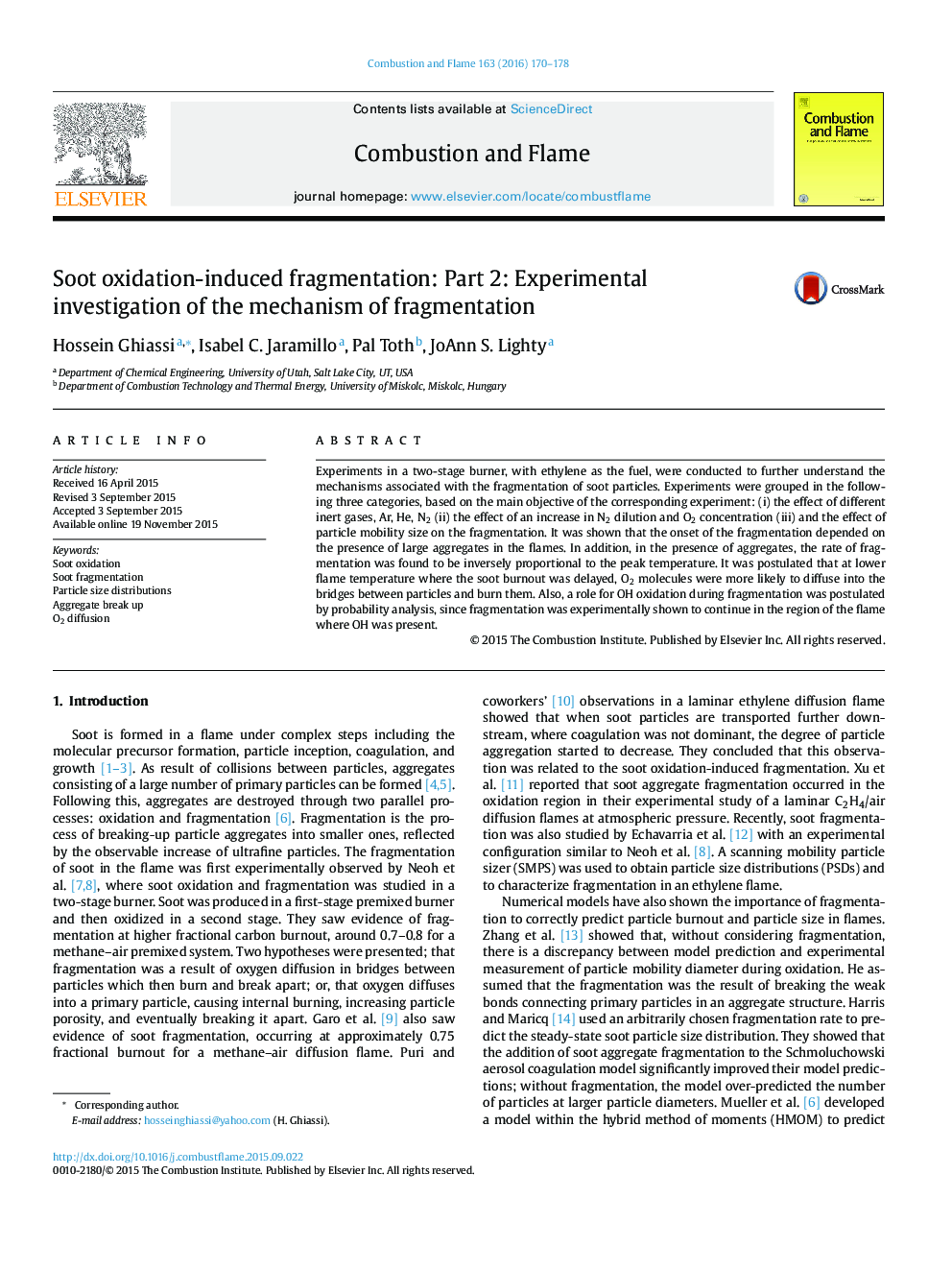| Article ID | Journal | Published Year | Pages | File Type |
|---|---|---|---|---|
| 6594352 | Combustion and Flame | 2016 | 9 Pages |
Abstract
Experiments in a two-stage burner, with ethylene as the fuel, were conducted to further understand the mechanisms associated with the fragmentation of soot particles. Experiments were grouped in the following three categories, based on the main objective of the corresponding experiment: (i) the effect of different inert gases, Ar, He, N2 (ii) the effect of an increase in N2 dilution and O2 concentration (iii) and the effect of particle mobility size on the fragmentation. It was shown that the onset of the fragmentation depended on the presence of large aggregates in the flames. In addition, in the presence of aggregates, the rate of fragmentation was found to be inversely proportional to the peak temperature. It was postulated that at lower flame temperature where the soot burnout was delayed, O2 molecules were more likely to diffuse into the bridges between particles and burn them. Also, a role for OH oxidation during fragmentation was postulated by probability analysis, since fragmentation was experimentally shown to continue in the region of the flame where OH was present.
Related Topics
Physical Sciences and Engineering
Chemical Engineering
Chemical Engineering (General)
Authors
Hossein Ghiassi, Isabel C. Jaramillo, Pal Toth, JoAnn S. Lighty,
